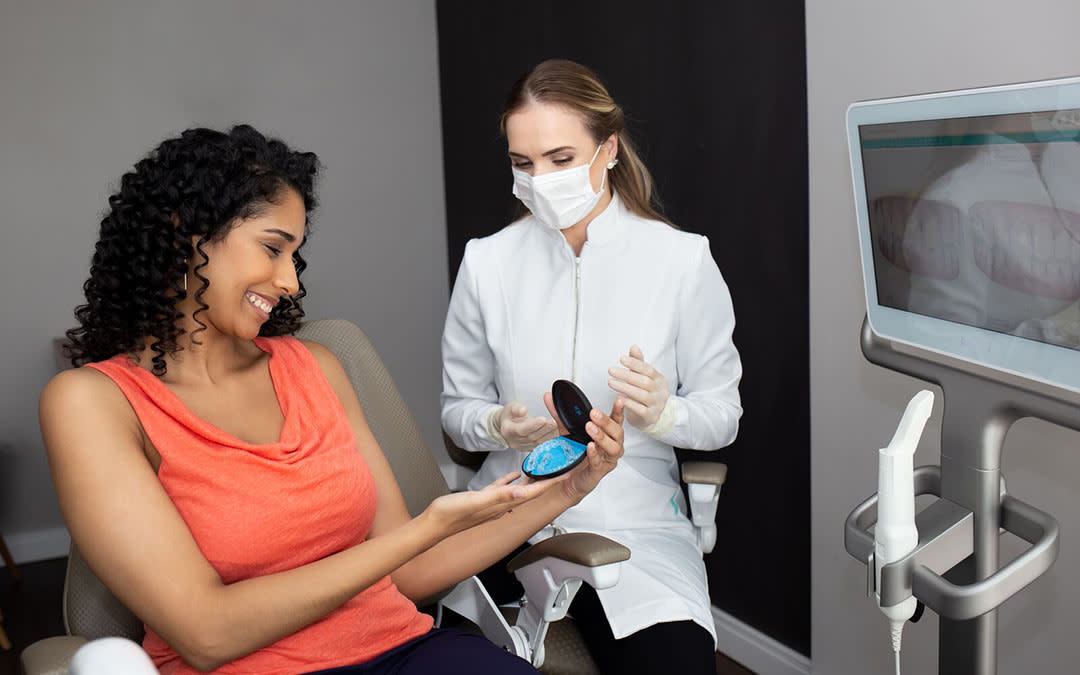Why you need to wear a retainer after straightening your smile with clear aligners or braces.
One of the main reasons it’s so important to wear your retainer is to reduce the risk of your teeth shifting back to their original positions after straightening treatment.1 Braces and clear aligners may straighten your teeth, but retainers keep them straight once they've been corrected.2 Even after your treatment is complete, your teeth aren’t firmly set in their new position until your gums, bones, and muscles adjust.2 Shifts in your teeth’s positioning are natural over time, but it’s crucial to follow your dental health professionals’ recommendations and continue to wear your retainer as prescribed.3
Why do teeth shift after orthodontic treatment?
There are multiple reasons why teeth may shift back after straightening treatments, including:
Gingival (gums) and periodontal (tooth) tissue changes. Your gums and the supporting tissues around your teeth may need time to adjust after orthodontic treatment, such as with braces or Invisalign® clear aligners, which may affect the position of your teeth.4
Growth changes. As a person grows, their mouth and jaw also change, which can cause teeth to shift back to their original positions.4
More complex causes, like the timing of tissue changes or unstable teeth positioning after treatment, can lead to teeth shifting back.4
Mild tooth shifting is normal after orthodontic treatment. This is sometimes called the “settling in” period, where your teeth move slightly as you bite, chew, swallow and speak. But not to worry, this is simply a natural part of the process.3
How do I prevent teeth from shifting?
Keeping your smile straight and beautiful after orthodontic treatment relies heavily upon consistent retainer use.5 It’s important to wear your retainer as directed by your dental health professional6 to prevent your teeth from shifting and to keep them in position6 after braces, Invisalign aligners, or any other treatment you complete.
Can I use my retainer to straighten my teeth if they started shifting back?
Retainers should not be used as a form of orthodontic treatment to reposition shifting teeth or to fix misalignments, as they aren’t designed to apply pressure to your teeth. Braces or aligners, on the other hand, are specifically made to gradually shift teeth into the correct position over time.6 However, if you forgot to wear your retainers for a few weeks and are concerned about your teeth shifting, don’t worry—you can still wear your retainer to gently shift minor misalignments back into place. You may experience a tighter fit and some discomfort during this process.6
Can I use my old retainer to fix my shifted teeth?
If your old retainer feels very tight or no longer fits after not using it for a long time, this is a good indicator that your teeth have shifted. It’s important not to force an old retainer over your teeth, as it may not fit properly and could cause pain and discomfort.6




